ESP Machines
This machine was built to shuffle the famous Zener cards, aka ESP cards. That is the late Dr. Elizabeth McMahan in the picture.
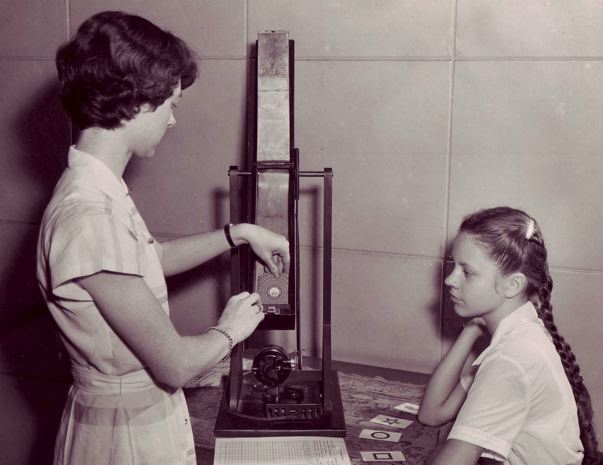
A blog about the Duke Parapsychology Laboratory.

This machine was built to shuffle the famous Zener cards, aka ESP cards. That is the late Dr. Elizabeth McMahan in the picture.

I’m probably revealing my science-ignorance, but a paper was published in the Journal of Neuroscience this month about an experiment that may have found evidence of something called mirror neurons in the human brain. I don’t have access to the Journal of Neuroscience paper, but I read about it in ScienceNews here. The article by Tina Hesman Saey begins:
“Macaque monkeys have specialized brain cells — called mirror neurons — that activate when a monkey performs an action involving an object, such as picking up a grape, or when watching someone else do the same task. The discovery of these neurons in 1996 led to speculation that they could be involved in everything from simulating others’ actions to language development to autism. There was only one problem: no one had definite proof that such cells exist in humans.”
The revealing my science-ignorance part of my post is this: if more definitive evidence is found, could mirror neurons explain the effects found in the Duke Parapsychology Laboratory ESP experiments?
The picture below is of an early ESP machine from the Duke Parapsychology Laboratory.
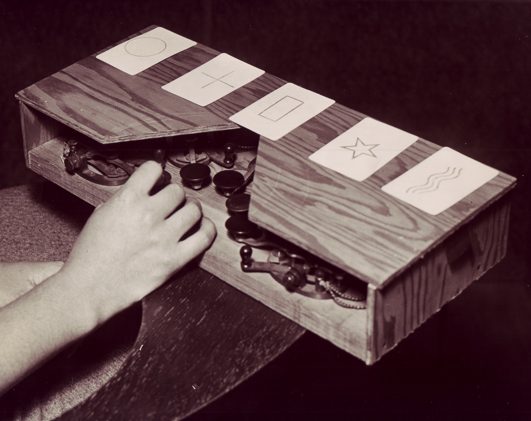
In the early 1950’s, while he was working at the Duke Parapsychology Laboratory, Dr. Karlis Osis conducted two experiments with cats. I didn’t study these experiments, and what I know of them I got from Gaither Pratt’s book, Parapsychology: An Insider’s View of ESP. In the first experiment, the cat was offered two “equally attractive food pans,” while the experimenter, “screened from the cat’s sight, decided on some random basis which should be the ‘correct’ pan for each trial.” (More below.)
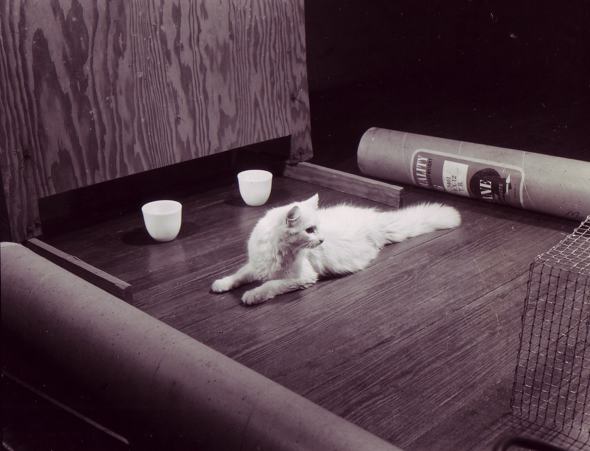
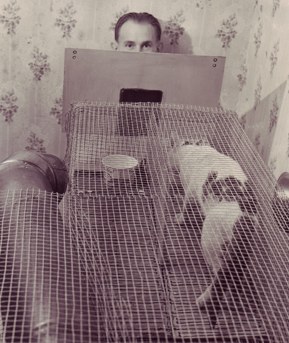
The experimenter (Osis) “concentrated upon having the cat make the same choice.” The results were “not spectacular,” but still better than chance. The problem was Osis couldn’t say whether it was ESP in the cats or “some essential psi element which the experimenter was contributing to the man-cat relationship.”
So they (Osis and Esther Bond) set up a second experiment, and this time neither experimenter knew the correct choice. One pan had food and one didn’t. A fan was installed to blow the scent of the food away. This experiment didn’t provide striking results either, in fact even less than the first experiment, but there was some evidence of ESP.
Not to be critical, but these experiments sound pretty crude today. I imagine better experiments could be conducted now. Rupert Sheldrake has done a lot of work with animals, which he has written about in his book, Dogs That Know When Their Owners Are Coming Home, And Other Unexplained Powers of Animals (1999).
I took some pictures of the ESP machines at the Rhine ESP/Parapsychology Museum at the Rhine Research Center and I can’t find all my notes! So I was thinking, that would be a little embarrassing, not being able to properly identify what they are. And that’s when I decided to make a contest out of it.
I will send a signed copy of my book to the first person who can explain what one or both of these machines are testing exactly and how! (If one person explains Machine 1 and a different person explains Machine 2, I will send a copy to each.)
Machine 1

Machine 2
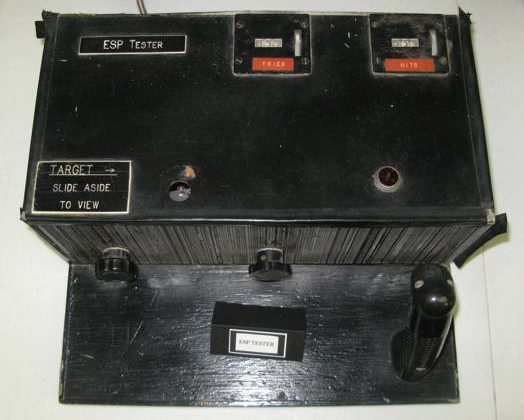
The scientists at the Duke Parapsychology Laboratory pretty much tested every group they could think of for ESP. The picture below is from a series they did testing blind children. The caption reads: The subject is trying to match sealed ESP cards to key cards with raised symbols. Rhine’s conclusions from his book Frontier Science of the Mind:
“Groups of blind children have yielded results that compared with those of seeing children of the same age … while no group of any size has been found completely devoid of capacity to demonstrate ESP, at the same time no subdivision of the human species has been found to stand out in any really distinctive way as either possessing superior psi powers or superior control over them.”
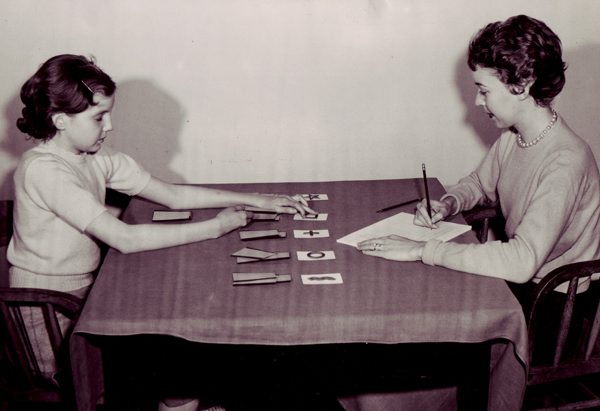
Previously I posted that while physicist Michio Kaku has written that telepathy is theoretically possible, how Kaku imagines telepathy is very different from how they saw it at the Duke Parapsychology Laboratory.
A few recent articles in WIRED about research into telepathy being conducted at DARPA (The Defense Advanced Research Projects Agency) and elsewhere describe a direction similar to what Kaku described in his book Physics of the Impossible (if I’m remembering what I read correctly). The main difference is J. B. Rhine and the scientists at the lab thought telepathy was non-physical, and the scientists conducting the research in these articles believe it’s a product of the brain. I think Rhine would say what they’re looking at is not telepathy but can perhaps mimic it to some extent. (Just a guess on my part.)
The articles I’m talking about are Pentagon Preps Soldier Telepathy Push, and Darpa: Heat + Energy = Brains. Now Make Us Some.
The picture below is another ESP machine built at the Parapsychology Laboratory.
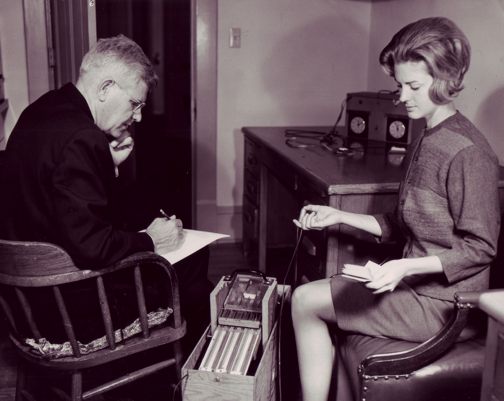
I have a geek side, I love machinery, and I’ve been collecting pictures of ESP machines. The machine below was designed by Helmut Schmidt, a German physicist who worked at Boeing’s research laboratory, and later for J. B. Rhine. From the caption that came with the photograph:
A recent development in the testing of precognition is the electronic machine shown. It emphasizes elements of fun and challenge to prevent build-up of emotional blocking mechanisms in the subject. The four lamps of different colors light up in different sequence: The subjects task is to predict which one will light next and push the corresponding button. The machine uses single quantum processes which may form nature’s most elementary source of randomness. And electronic counter that counts (at a rate of 10 to the 6th power per second) in the sequence 1,2,3,4 1…is stopped at the random time when an electron emitted by a radioactive source (strontium 90).
That is Helmut Schmidt in the photograph.